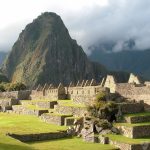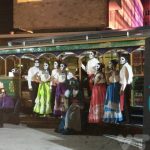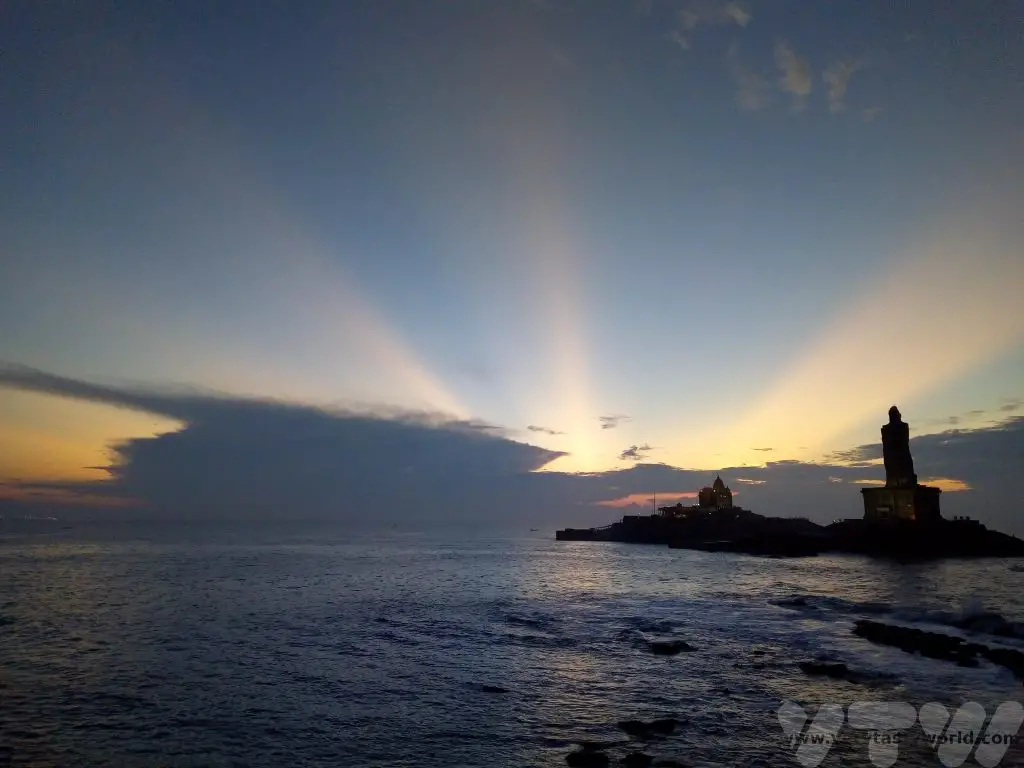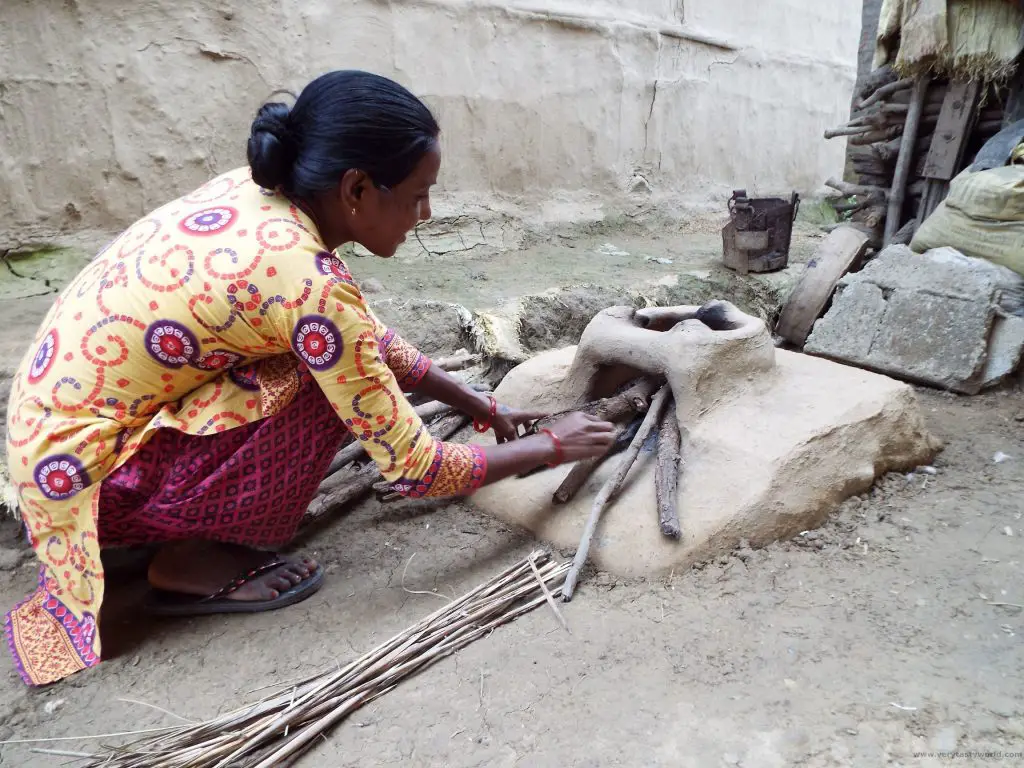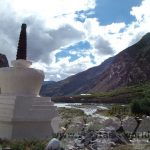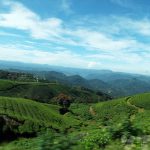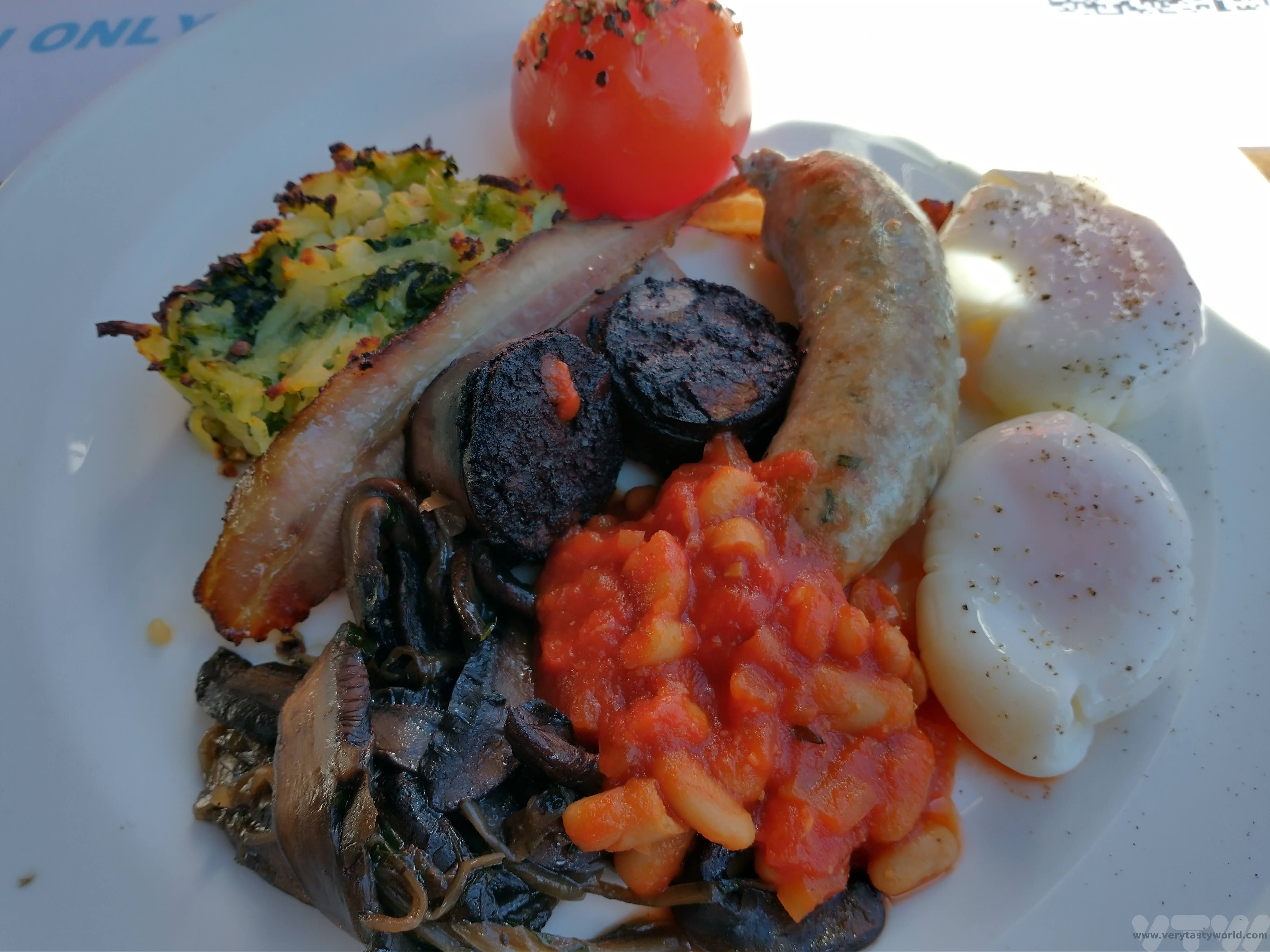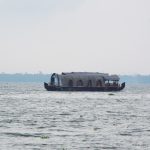Home » Posts tagged 'travel' (Page 2)
Tag Archives: travel
Sweet Treats in Candy Alley, Kawagoe, Japan
There are loads of cool and interesting districts to visit that are just a (relatively) short train journey from central Tokyo. Kawagoe is one such place for a day trip. It is just half an hour to one hour’s train ride away, depending on where in Tokyo you are staying, in Saitama prefecture. You can get there directly from Shinjuku on the Seibu line. It’s known as Little Edo because of its old warehouses and merchant homes, called Kurazukuri.
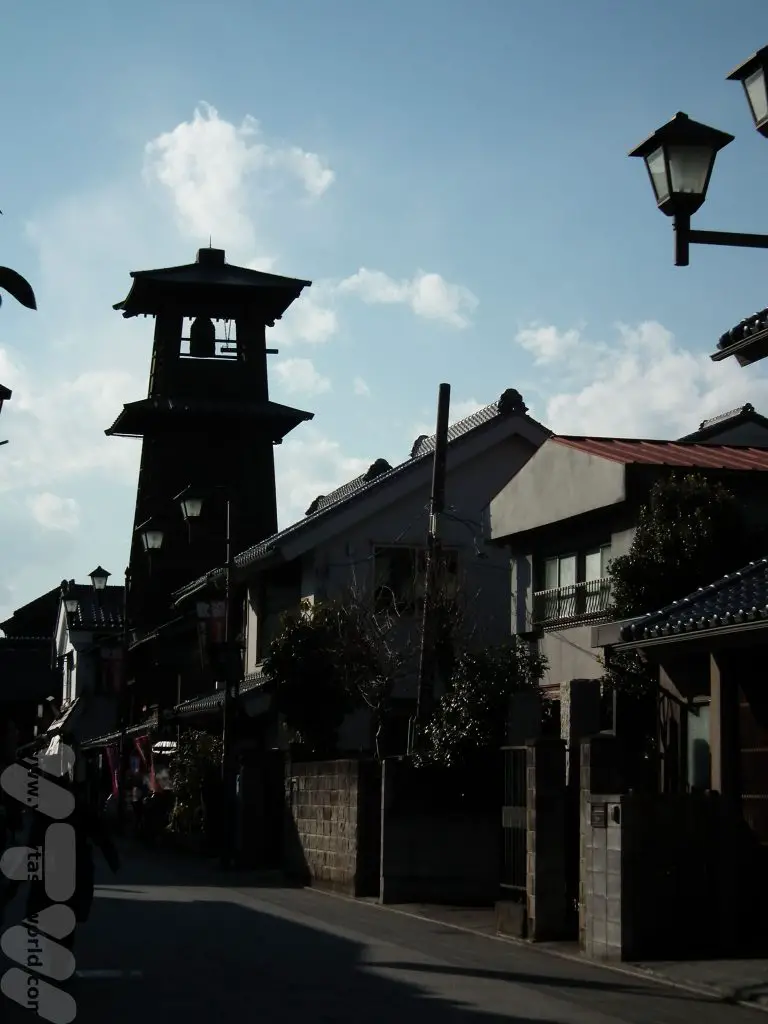
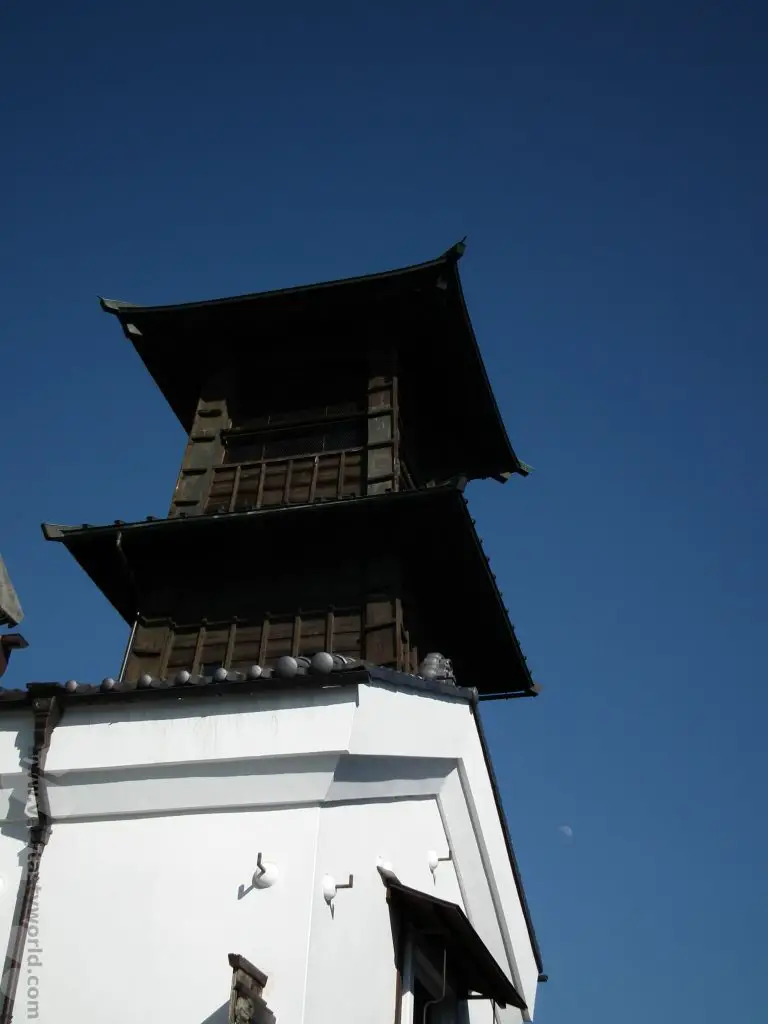
It has a charming old world feel, albeit with lots of shops for tourists, and there are loads of foodie attractions and restaurants to look out for; charcoal boiled eel in a sweet soy sauce is a speciality here, as are sweet potato dishes.
One of the attractions in Kawagoe is Kashiya Yokocho – Candy Alley – a street chock full of traditional Japanese shops offering sweet temptations.
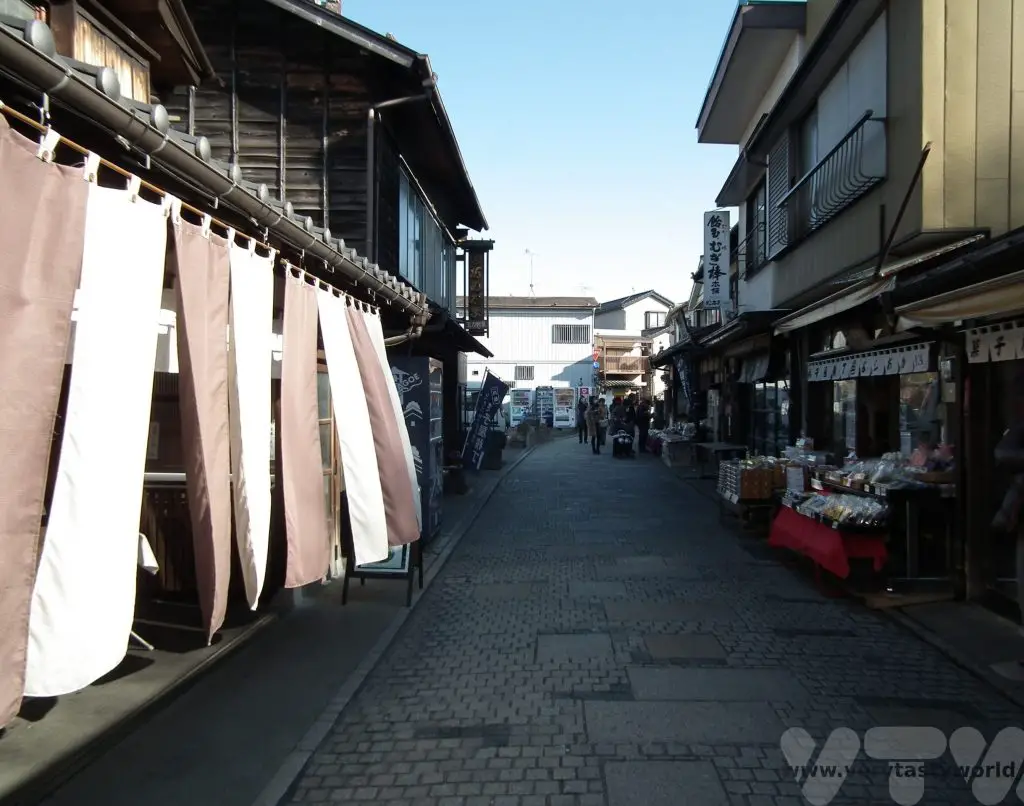
This emporium had a giant penguin minding the store.
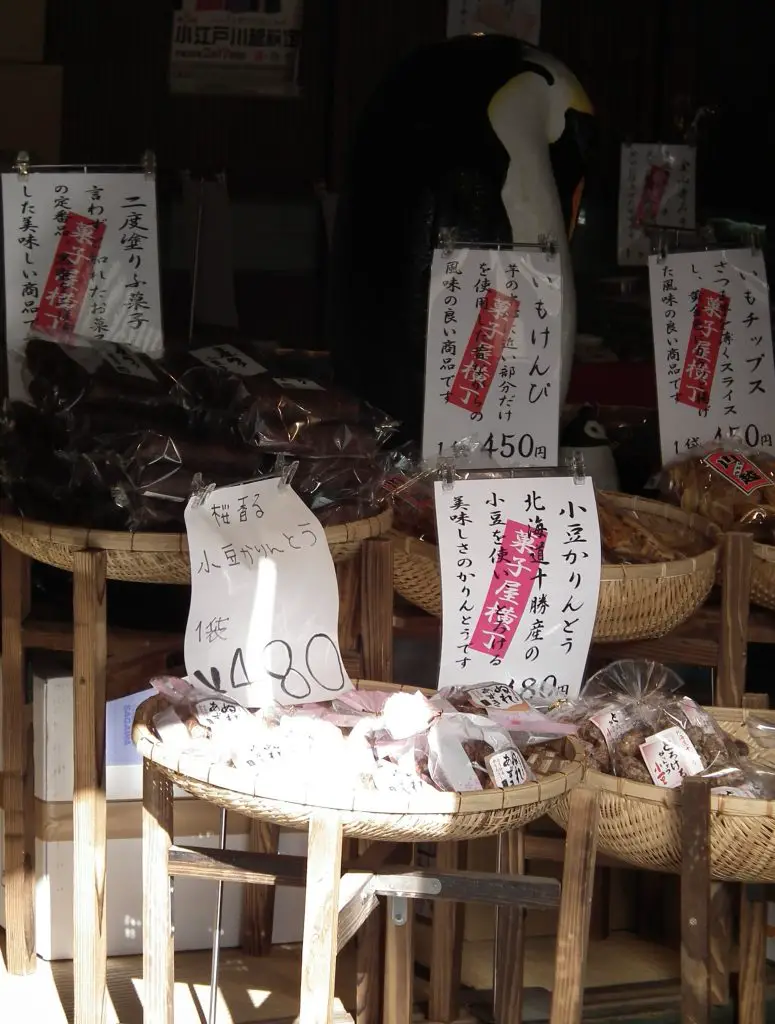
The Kawagoe tourism website has a brief history of the alley:
It is said that the beginning of this Kashiya Yokocho was in the early Meiji Period when Suzuki Tozaemon started to make candy in this prospering town in front of Yojuin Temple. In 1923, after Tokyo was damaged in the Great Kanto Earthquake, this area became the main producer and supplier of candy. There were more than 70 shops in the early Showa Period but due to the war and changes in lifestyle the number has decreased.
If you don’t have a sweet tooth, no problem. There are plenty of savoury snacks on offer as well. Takosen is takoyaki (deep fried octopus balls) sandwiched between prawn crackers.
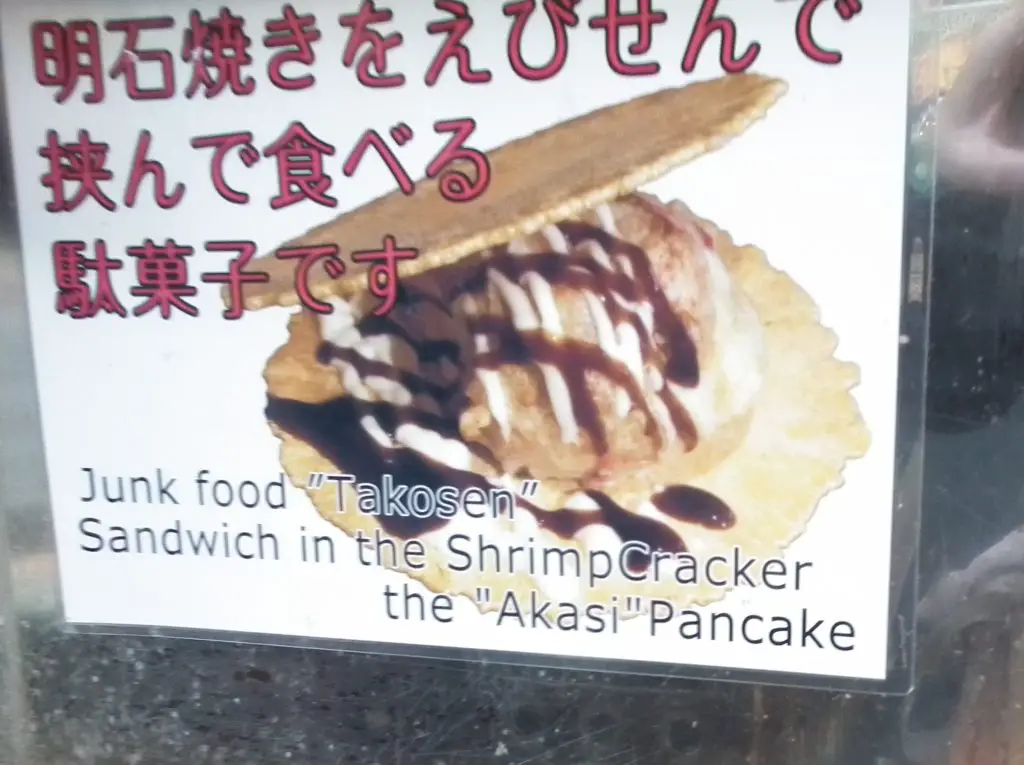
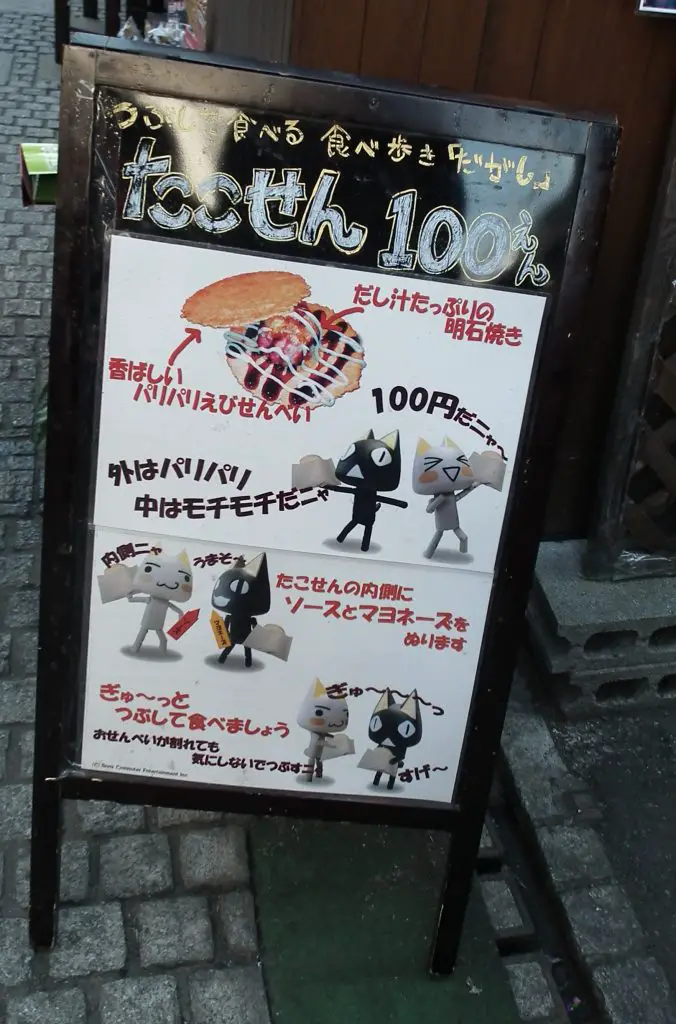
The name combines tako (octopus) with senbei (cracker) and advertises itself as junk food. It is seriously good.
Sweet potatoes are particularly popular, in fact Kawagoe is known colloquially as the city of sweet potatoes. Once considered a staple after the war, when food was scarce, the city still makes multiple products from these tasty tubers.

And if you’re given a photo opportunity to pose as a sweet potato you have to take it, don’t you?
Imo senbei snacks are thinly sliced, dried sweet potato crackers sprinkled sparsely and randomly with black sesame seeds.
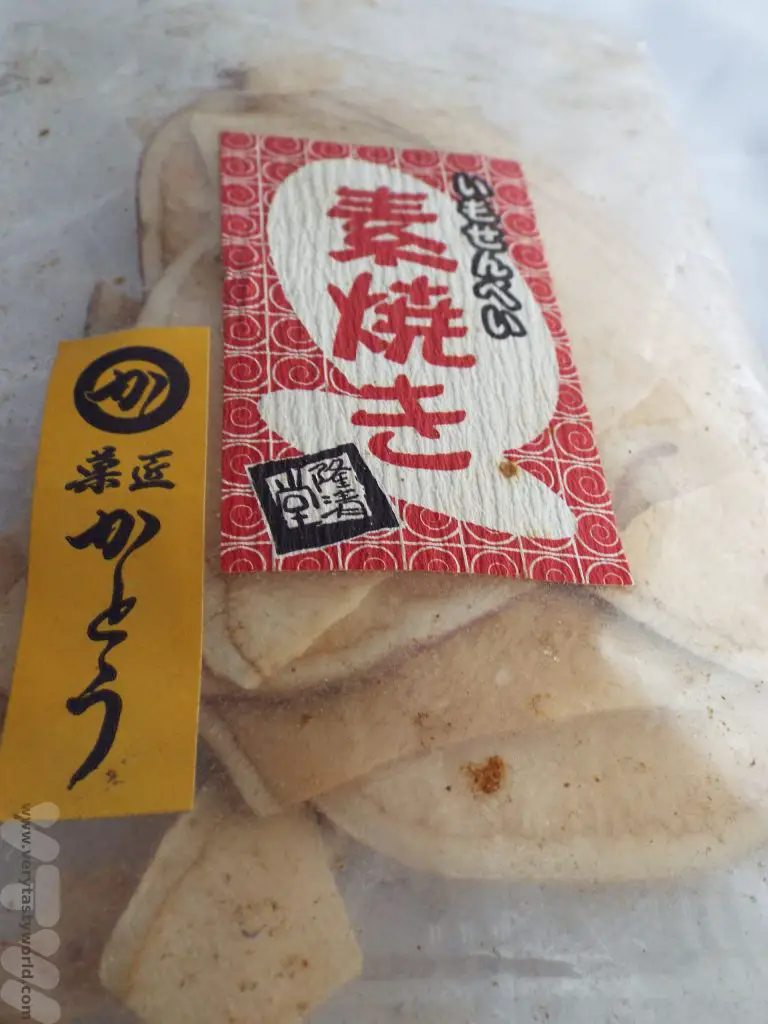
The curious thing about these is that you would expect them to be either sweet or slightly salty and they are neither. They are not bland, but rely on the natural sweetness of the sweet potato and have just a hint of sesame for additional flavour. They have a lovely crunchy texture and are great to eat as an accompaniment to a cool beer.
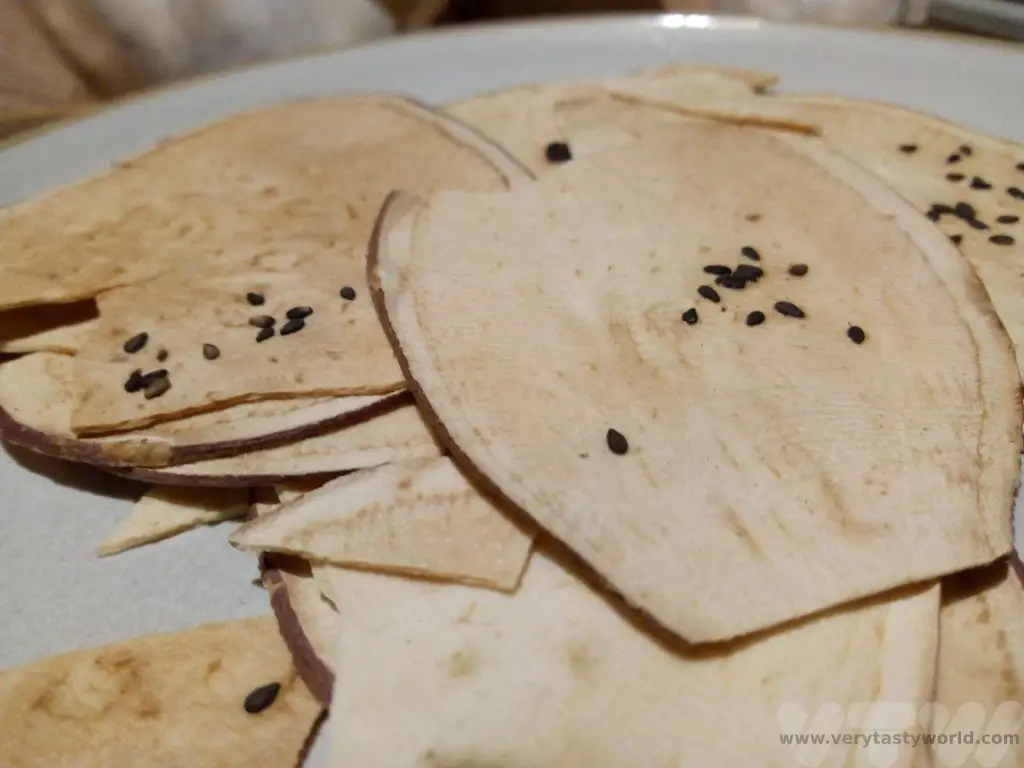
They are also very thin and lightweight – so they are ideal for slipping into your suitcase as an omiyage (a souvenir/gift) for your friends. Or you could just keep them and scoff them yourself when you get home!

- Recipe: Simmered Shiitake Mushrooms
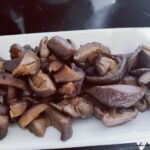
- How to Use Public Transport in Japan

- RECIPE Oyakodon Donburi

- Planning a Trip to Japan
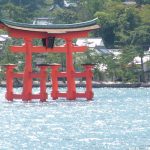
- The Makanai: Cooking for the Maiko House

- Setsubun Food – Bean Throwing Day

- The Gassho Farmhouses of Rural Japan
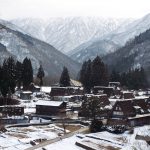
- Recipe: Japanese Simmered Pork Belly – Buta no Kakuni

- RECIPE: How to Make Umeboshi

A Day Trip Around Lake Akan Hokkaido
Japan’s northernmost main island of Hokkaido is a nature-lover’s paradise. To the east of the island, just north of the city of Kushiro is the Akan National Park, named for the beautiful lake in the region. We spent a day in the Lake Akan Hokkaido park area. You need transportation to get around this area as many of the attractions are some distance apart.
Eastern Hokkaido is a popular holiday region and because of the volcanic activity there are plenty of onsen – hot springs resorts. Lake Akan itself was formed inside a caldera when lava cooled and formed a dam 6000 years ago. It’s a large lake of around 14 square kilometres and is known for its clear water. There are all sorts of activities in the area, including boat trips across the lake.
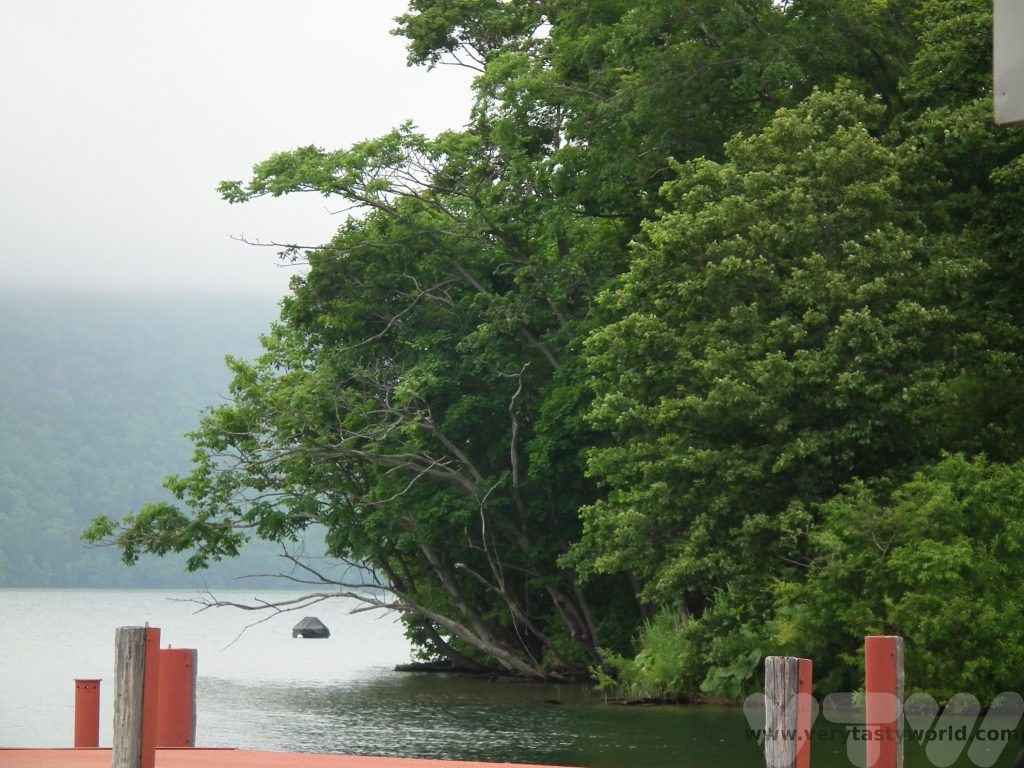
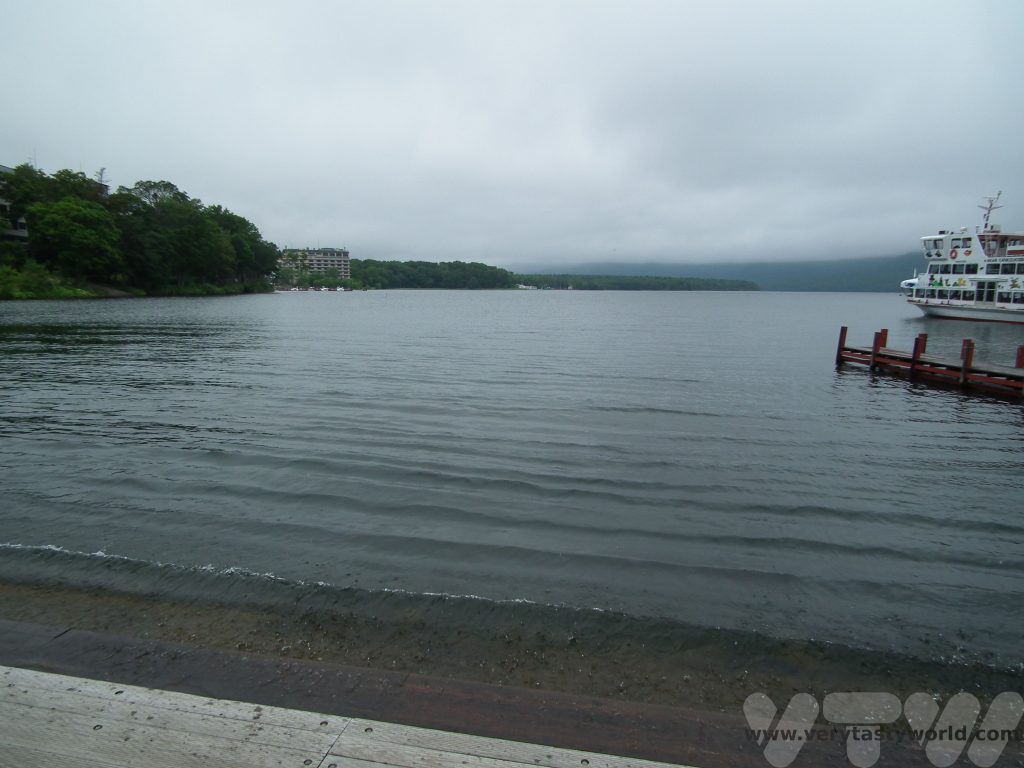
There is a very pretty waterfall close by.
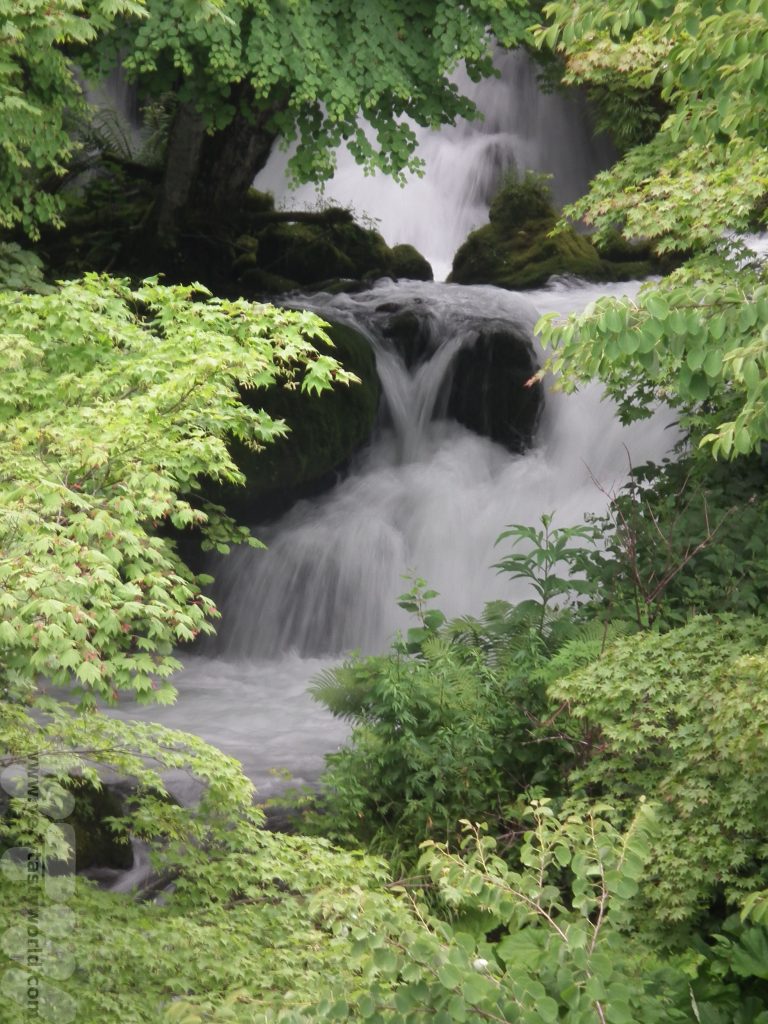
Akan is not the only lake in the national park. Lake Mashu is also renowned for its beautiful clear water. That’s if you can see it. Unfortunately we visited on a particularly vile day – when we arrived it was raining and misty and there was no view of the prestigious lake to be seen. Hey ho. Can’t help the weather. This is what it looks like on a sunny day.
We did manage to see the sign though.
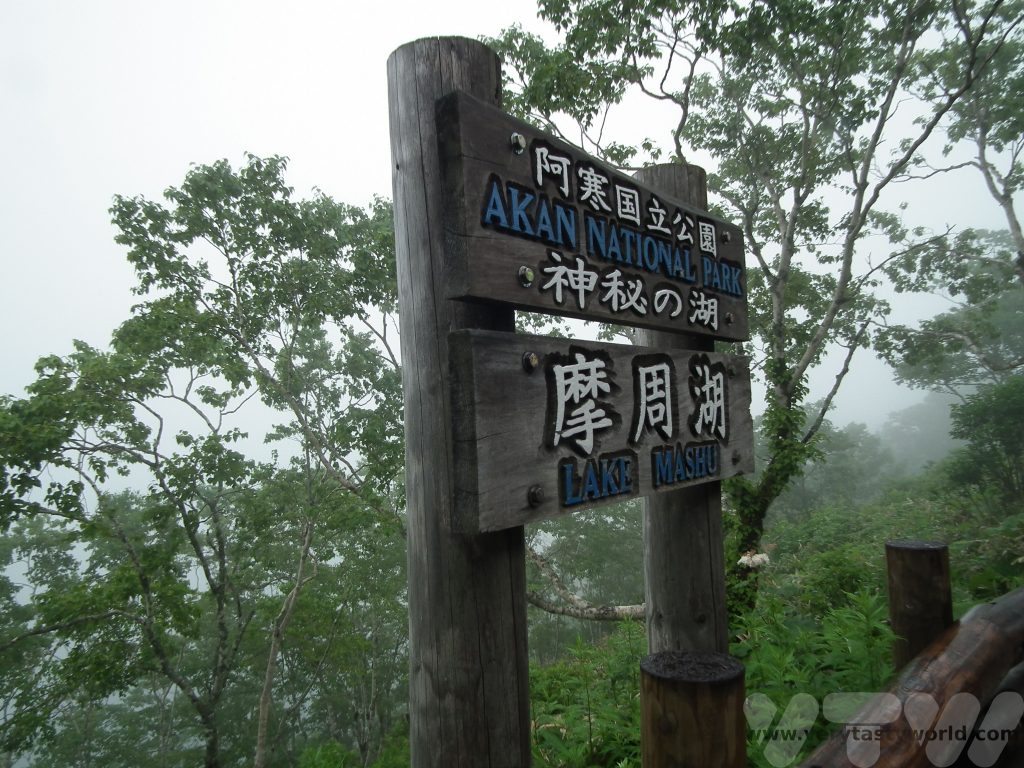
To make up for the lack of view, we decided that lunch would be a good option. The region specialises in soba noodles.
Mashu soba is made from buckwheat noodles. The noodles are made that morning, so are really fresh. They are cooked, rinsed in cold water and then served on a bamboo mat. Pick them up with chopsticks, dip into a savoury, refreshing dipping sauce and devour. Wasabi and negi (like spring onions) are available to add an extra dimension of heat and crunch. And don’t forget, it’s perfectly acceptable to slurp your noodles.
If you’re hungry you can eat mashu soba as part of a set meal. Vegetable and prawn tempura, miso soup, pickles and a cup of green tea make for a veritable feast.
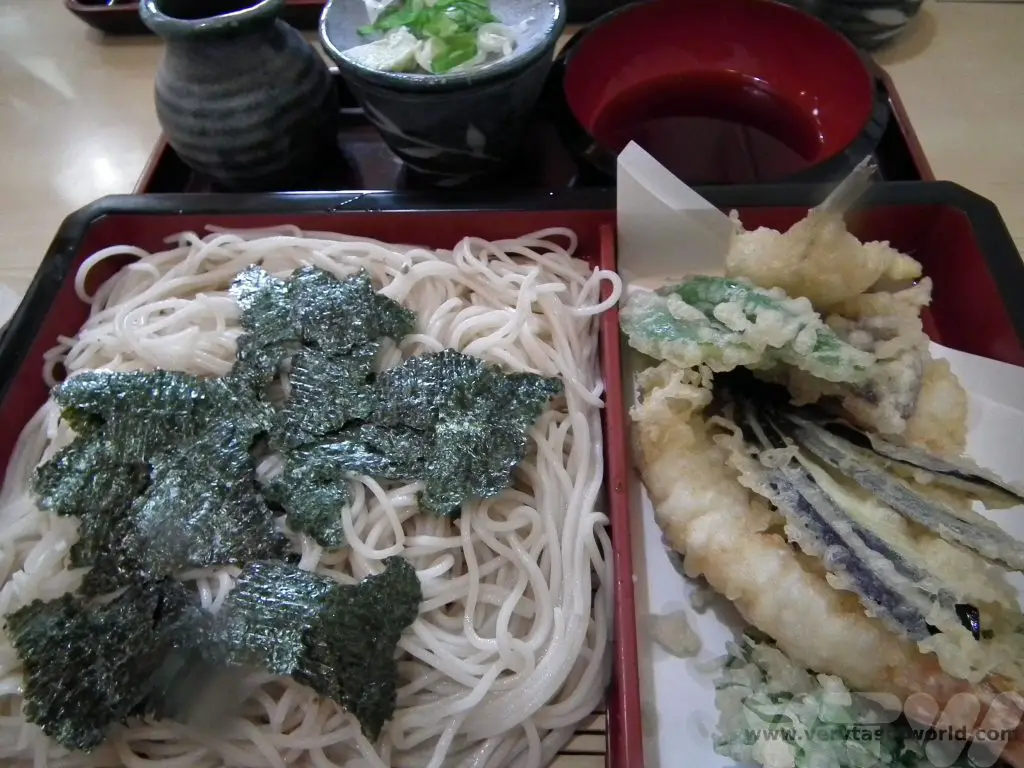
You might think that cold noodles on a rainy day might not be the best combination for maximum enjoyment but actually it works. Especially if your next stop is to a hot spring foot spa. Simply dip your toes in the hot water and ignore the rain… (we’ll spare you the pictures of our feet in the water).
There are also some other interesting places to visit in the area.
The Iozan volcano area (Iozan literally means ‘sulphur mountain’), with its gloriously yellow sulphur deposits and eye-watering smells if you get too close. You are free to walk around on the footpaths, although areas are off limits for safety reasons. You can also buy eggs cooked using the natural heat of the mountain at the visitor centre.
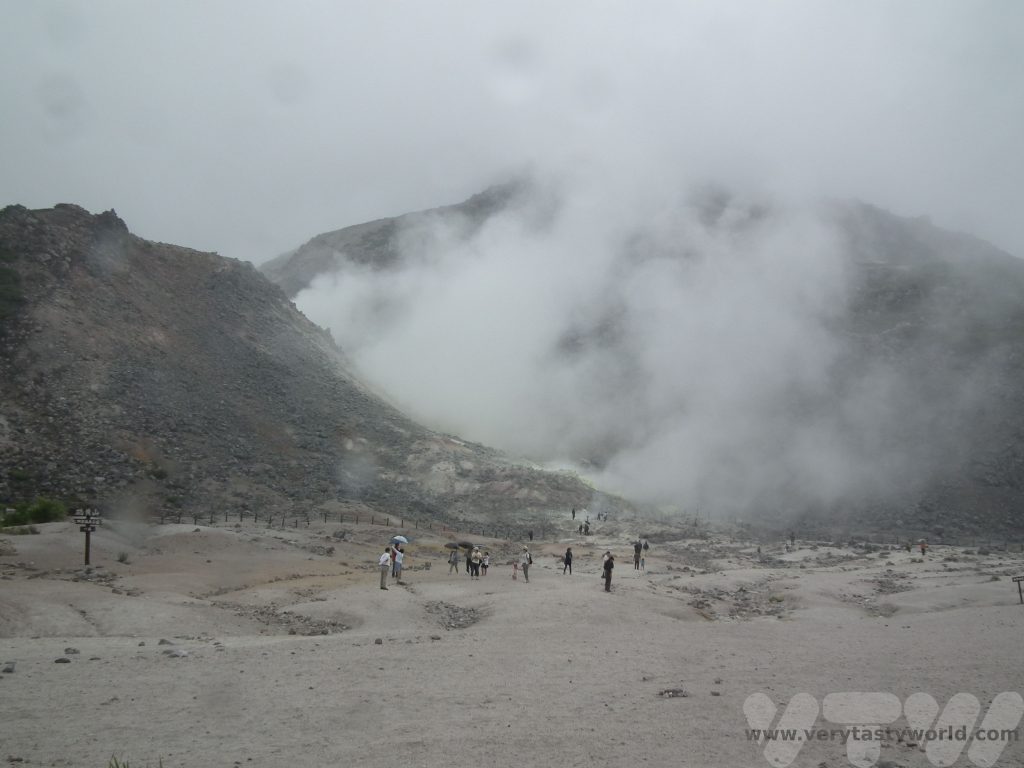
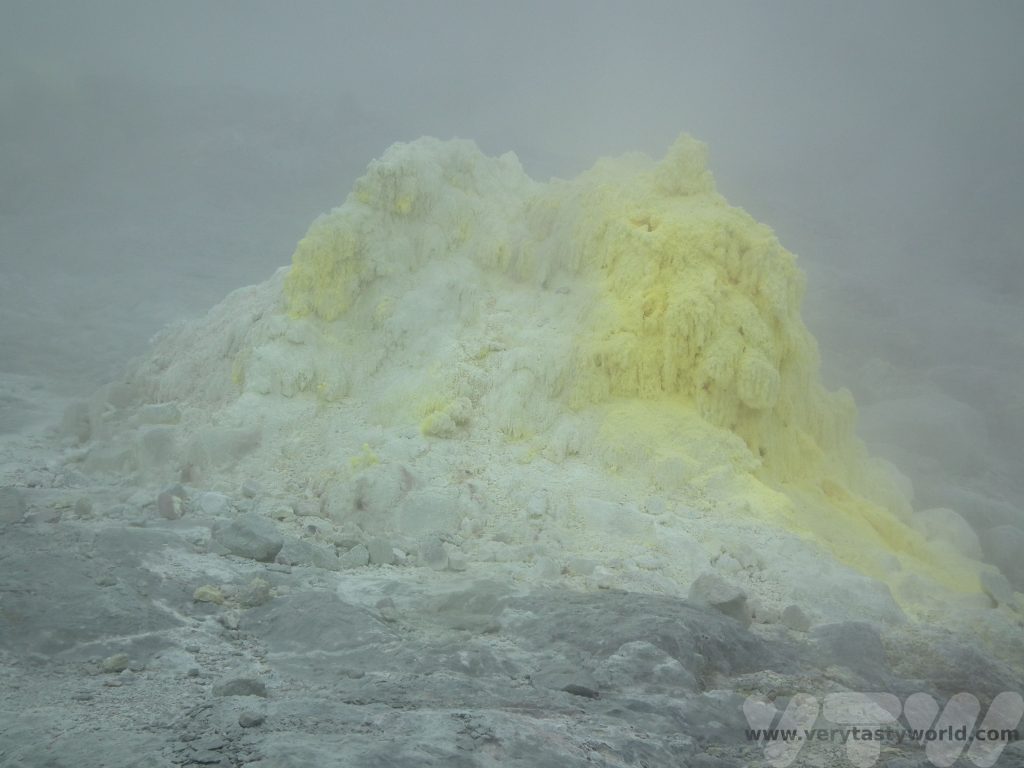
The Kushiro wetlands.
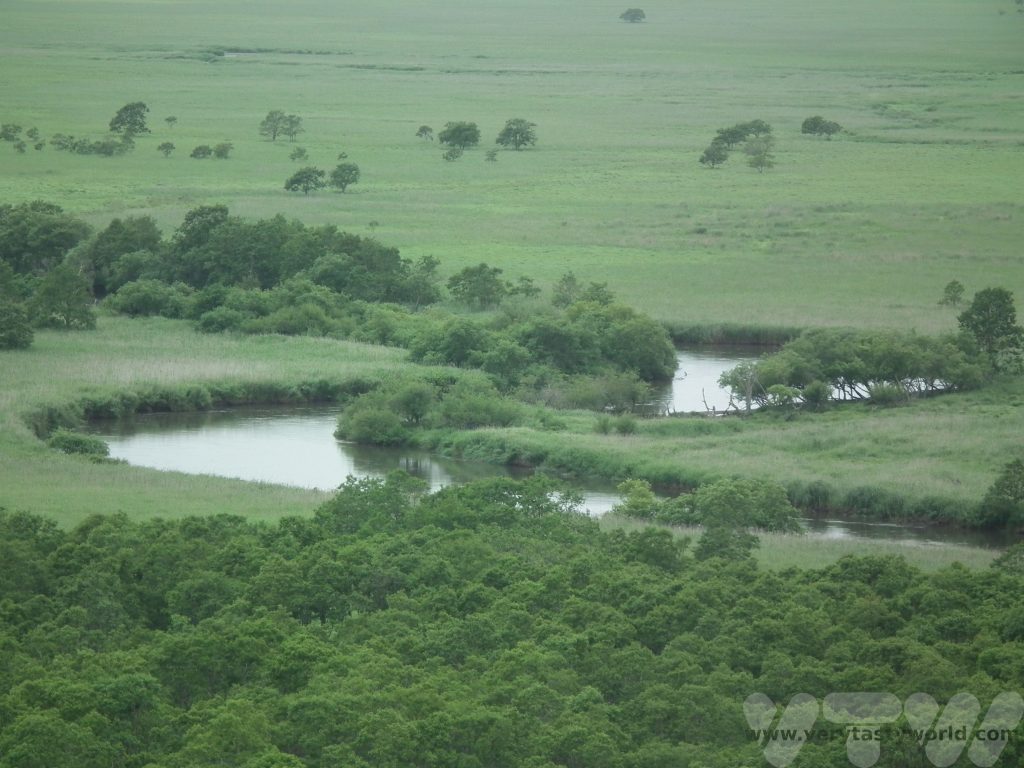
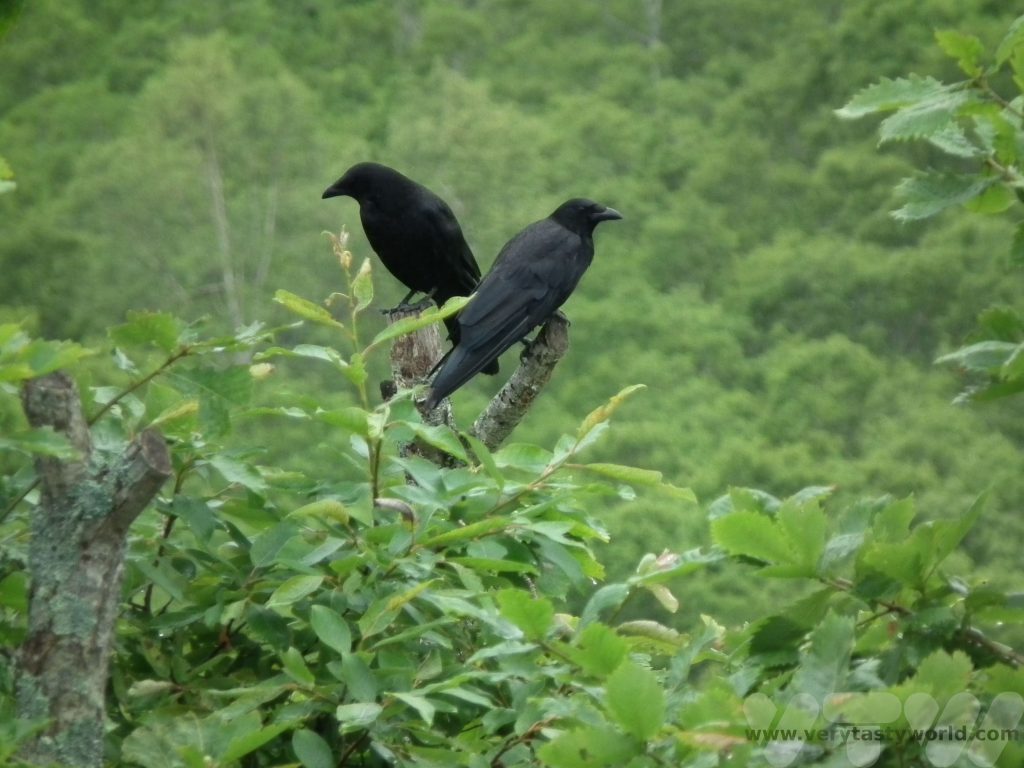
And the Akan International Crane Sanctuary. The red crowned cranes are amongst the rarest cranes in the world but many reside on the eastern side of Hokkaido. They are best known for their courtship dancing ritual, especially during winter. The sanctuary provides a feeding station for wild crane visitors but also homes a number of captive cranes in a natural environment.
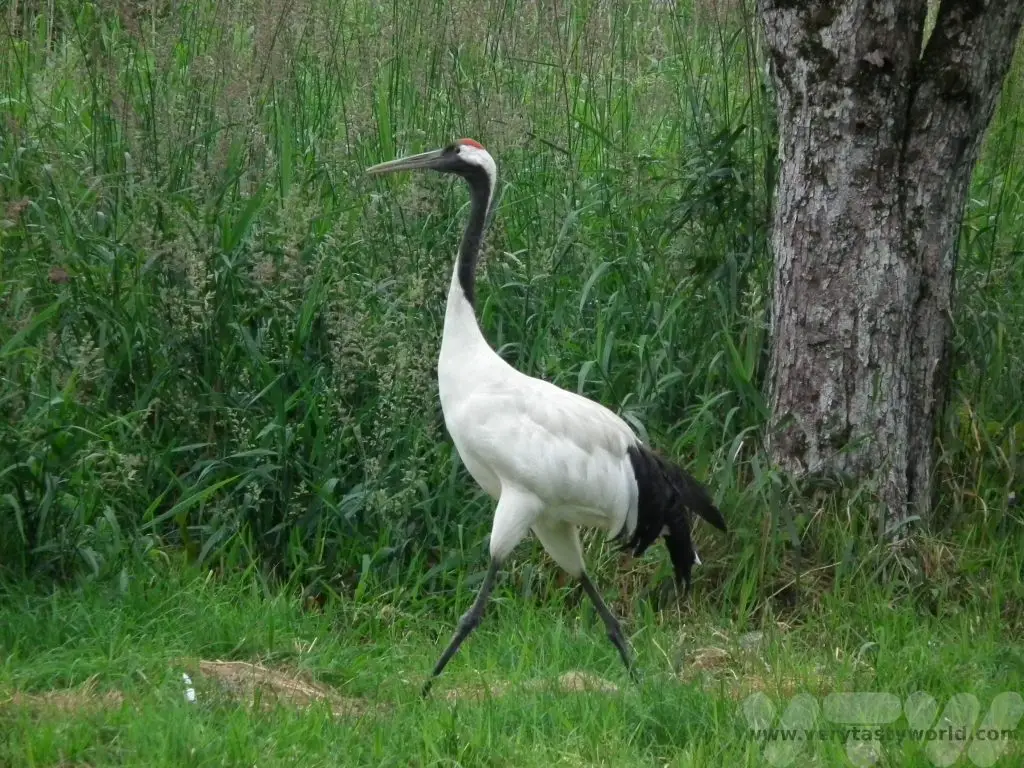

- Recipe: Simmered Shiitake Mushrooms

- How to Use Public Transport in Japan

- RECIPE Oyakodon Donburi

- Planning a Trip to Japan

- The Makanai: Cooking for the Maiko House

- Setsubun Food – Bean Throwing Day

- The Gassho Farmhouses of Rural Japan

- Recipe: Japanese Simmered Pork Belly – Buta no Kakuni

- RECIPE: How to Make Umeboshi

Turtles Nesting in Tortuguero, Costa Rica
Warning for no photographs at all. We grew up using film cameras. The ones where you have a maximum of 24 or 36 shots on each roll of film and, once used, you had to wait for weeks for the films to be developed at the laboratory and for the prints to be sent back home. You chose your shot carefully, you composed it, each and every picture was a precious thing. Digital photography is fantastic in so many ways – we would never have taken a picture of our meal using celluloid! – but with such easy access to cameras and phones and virtually unlimited shot potential sometimes it feels as though we are so busy capturing pictures for posterity that we forget to experience the moment.
Tortuguero on the Eastern coast of Costa Rica isn’t really how you’d expect the Caribbean to be. Even though you can get a lovely drink of coconut water directly from the pod, the coastline is wild, the sea rough and you probably wouldn’t sunbathe on the beach. You definitely would not want to go swimming in the sea for fear getting eaten by sharks. You also wouldn’t want to swim in the channel on the other side of the peninsula for fear of getting eaten by caiman. But it’s the most amazing place to view some of Costa Rica’s wildlife.
The weather is hot and humid. Really hot and very humid. The area experiences about 6000 mm of rainfall every year and when it rains, it rains. We recommend waterproof ponchos. There was no aircon in the lodge we were staying in, just an old-fashioned fan, which provided a minimal amount of respite. The waves pounding relentlessly on the beach provided an aural backdrop.
One of the main attractions are the turtles that come to the beach to nest. Each species has a different nesting season. We visited in late June, just before the season when the greenback turtles were expected to come ashore. Although our hotel wouldn’t offer a guide because they couldn’t guarantee a sighting, we found a local guide who was willing to take us out and gave us a discount on his usual price, although he emphasised that we might not get a viewing. We decided to take a chance. We knew we were very close to the nesting season and we were pretty sure that the greenbacks weren’t lurking a few km offshore checking their greenback calendars to wait for the 1st of July.
We met our guide at 9pm and were given a briefing. The tours are undertaken to ensure minimal disruption to the turtle. No white light was allowed on the beach at all, the guide had a red torch so that we could – just about – see our way in the dark. In fact, even the local houses that line the shore refrain from using white light in their dwellings so as not to discourage the turtles from coming ashore. A small group of us walked in single file along a stretch of beach. It was really hot and very humid, even at that time of night. Our guide was looking for ‘tramlines’ going up the beach, a sign that a female turtle had come ashore. These appear to be parallel lines when you view them at a distance in the dark but, on closer inspection, the tramlines are actually distinct flipper tracks.
Other groups were scanning different sections of the beach and the guides kept in touch with each other via mobile phone. After walking 1 km to the village and a further 2 km along the beach we learned that a female had come ashore just 100 m away from our hotel. We had to dash back. Did we mention how hot and humid it was? As it turned out, we could have simply sat in the bar drinking cocktails then sauntered onto the beach. Instead, it was a hot, sweaty trot. We earned our turtle.
By the time we had arrived the greenback had traversed the width of the beach from the ocean shore to a location above the high tide mark, had dug a hole and was starting to lay her eggs. Cameras, phones and even torches are – rightly – banned on the beach. There were a couple of other groups who wanted to view the turtle. The aim was to ensure that everybody got a view without disturbing her. She was facing away from the shoreline and had her back to the tourists. Groups of ten people, five kneeling, five standing behind them were allowed to view the turtle for a couple of minutes at a time. Silence was mandatory. Then each group stepped back to let another group have a viewing. Throughout the process each group took a turn – step forward and view, step back and wait.
This greenback had been born on this beach. She was the 1% of all her siblings that had made it to adulthood, had travelled thousands of miles across the ocean and returned to the place of her birth. The egg laying was a real labour for the turtle. She laid around 100 eggs and after the final one, used her back flippers to push sand gently across to cover them all. Once the eggs were covered she then used her front flippers to brush across the sand, disguising the fact that a hole had even been present. These flippers were strong and no one knelt to watch that part of the process– they would have ended up with sand in their faces. Then the tourists melted away to let the turtle rest before she returned to the ocean.
In the spirit of no images, we woke up the next morning elated at our luck. The birds were singing, the Atlantic Ocean (heard in the background rumble) was crashing on the shore. This is how it sounded.

- Best Time To Visit Machu Picchu 2024 Update
- A 2 Week Patagonia Itinerary
- Day of the Dead in Campeche
- A Galapagos Land Based Itinerary
- RECIPE: How to Make Costa Rica’s Gallo Pinto
- A Tasty Puebla Food Tour
- Costa Rica Wildlife Sanctuary – Caño Negro
- Visit Torres del Paine National Park in Patagonia
- Atacama Desert Itinerary
Hello, Thali – South India Thali
South Indian Thali are a wonderful way to enjoy a cheap and filling meal which gives you the opportunity to sample loads of different dishes. Most restaurants across India will offer a thali option and often they are available on an endless top-up basis. Although, to be fair, even though the portion sizes of the individual dishes aren’t enormous, the combination of delicious food and rice is guaranteed to fill you up. While we were travelling through South India unlimited thali meals were available for just a couple of dollars. There will always be a choice of veg or non-veg thali. Both are emphatically delicious.
Thali are all about flavours and textures.
The quintessential thali comprises a flat round plate with a heap of rice in the centre surrounded by small bowls containing a variety of sauces, vegetables and curd. There will be a sweet dish in there too. And, of course, a crispy poppadum on top.
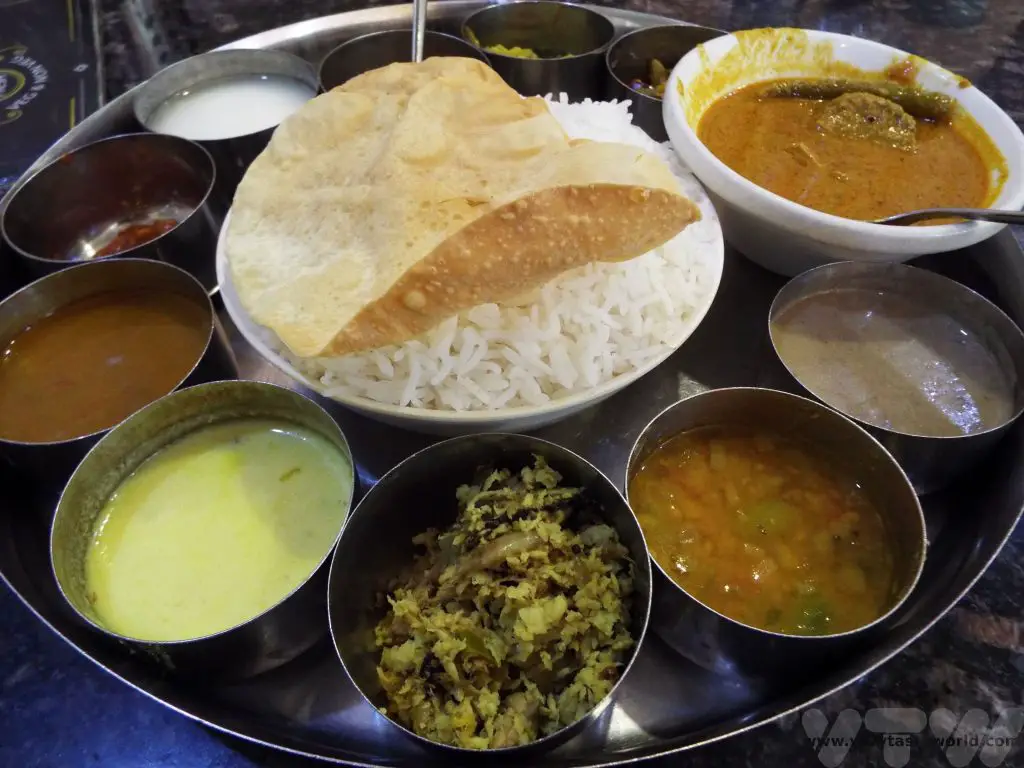
If you’re in South India many restaurants won’t have a knife or fork, but there are usually spoons available. If you’re eating with your fingers, make sure you wash your hands first. Every restaurant has a hand-washing area.

Sometimes the South Indian thali will be served on a banana leaf which is a more traditional approach – in a restaurant the waiters will arrive at each table with a vessel and will spoon the various curries onto the leaf. They will return and return – just nod to request another dollop of something delicious.
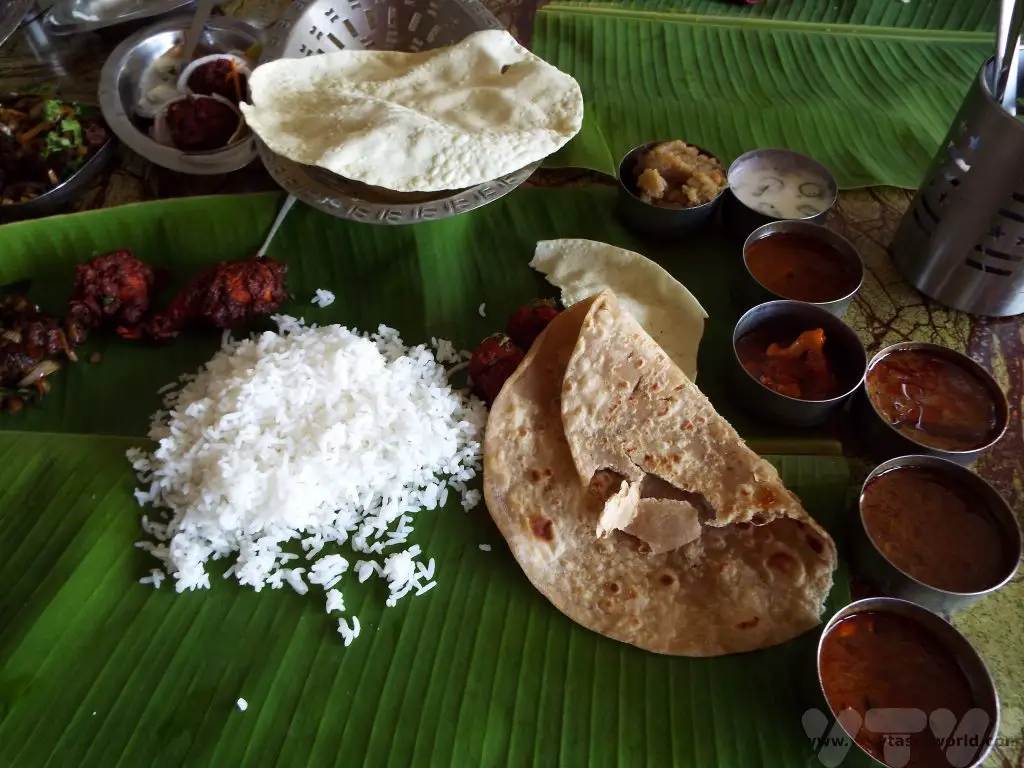
How To Eat South Indian Thali
Separate a portion of rice and pour the sauce from the dish or place some of the vegetables onto it. Mix it in. Then scoop up with the fingers of your right hand, pop it into your mouth and savour.
There is an order to eating the dishes of the thali, although no one will criticise you if you don’t follow it.
You should start with meat (if you are eating non-veg) and vegetables – both sauced and dry form.
Sambar, a mild lentil and vegetable sauce, comes next. It’s a staple throughout the region, often found at breakfast too – and eaten with idly (a savoury rice cake) or vada (like a savoury doughnut).
Rasam is a thin sauce, almost like a soup, made with tamarind to give a sour note, but spiced up with chilli or black pepper. It is always the last of the sauces to be eaten and it too can be mixed with the rice.
Yoghurt (also known as curd) rounds off the savoury part of the meal. It cools the palette in preparation for the dessert (if there is one).
There is often a sweet dish in one of the bowls – maybe something like rice with jaggery or sweet vermicelli in a milk-based sauce. If the dessert is liquid based, it’s okay to drink it directly from the container. Sometimes you may be given a piece of fruit. And the fruit, locally grown of course, is delicious.
We found that whenever we ate in restaurants the locals were very happy to see us. They were also quite keen to see how we coped with eating using our hands (a little bit messy, to be honest) but they were also happy to guide us about the etiquette. There were a number of occasions when we weren’t really sure in which order to eat the – absolutely delicious – dishes, and were on-hand to offer some friendly guidance, particularly when it came to accidentally eating the sweet dish before the savouries had been guzzled with relish!
Related Posts You May Enjoy

